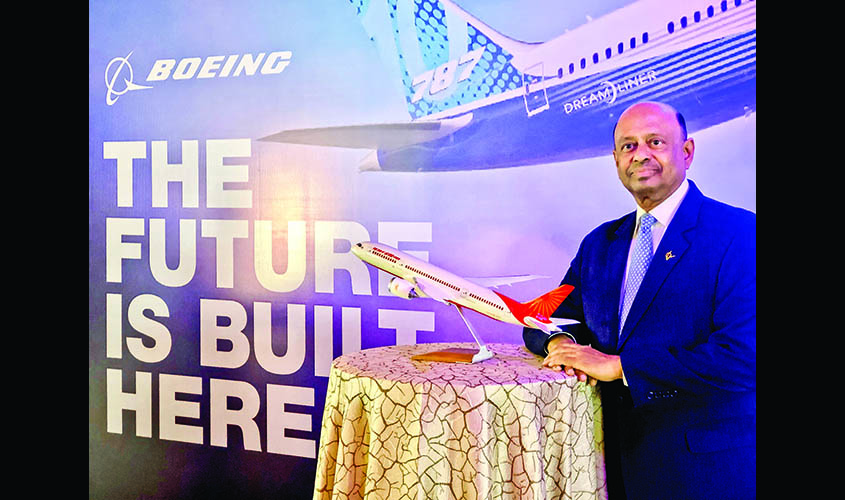Boeing’s Dinesh Keskar says that hiccups are always there but the Indian aviation market will continue to grow fast in the coming years.
Mumbai: On the sidelines of the Global Aviaiton Summit that was held here earlier this week, Dinesh Keskar, Boeing’s Senior Vice President-Asia Pacific and India, spoke to The Sunday Guardian about Boeing’s vision and forecast about the Indian aviation market. Excerpts:
Q: As one of the major players in the aviation industry, how do you look at this Global Aviation Summit being organised in India?
A: India has come a long way in aviation history; it is quite impressive to see such a great response that it has received from the world—over 1,000 delegates are present here, 800 of them are from 83 different countries and it is a first-of-its-kind event here in India. This summit will help put across a message about how great the Indian market has been and how exponentially it has been growing. It also shows how India will be the third largest aviation market in the world in the near future. India is a multi-billion dollar investment opportunity, in airports, in infrastructure and such other things. The aviation summit is a great initiative by the Ministry of Civil Aviation and the Government of India.
Q: Where do you see the Indian aviation market in the next 10 years, given the massive growth path it is currently on?
A: We have given a forecast for the next 20 years. We have said that India will need 2,300 aircraft worth $320 billion. The Indian aviation market is in double digit growth for the last 50 months and from the rapid pace at which the Indian market is growing, we think it will continue for another few years. This country is going to be the highest growing country in the aviation world for a while.
Q: But, at times, the aviation market in India is hit by some hiccups due to increasing fuel prices and high operating costs in India. Do you think this could lead to a slump in growth in the coming years?
A: I do not think so. Hiccups are always there and they will always happen. Our forecast is based on the current state of infrastructure. We have also taken into account our projection of fuel prices, infrastructure, the available man power, the training situation and all other such things. So, if it gets better, it will only be helpful for upward growth.
Q: Given the huge demand from the Indian aviation market, how does Boeing’s order list look like for India and where do you think you are placed in the market?
A: We have sold over 200 airplanes to both Spicejet and Jet Airways. Vistara has also bought Boeing’s 787. Air India is already operating 787s , 777s and, therefore, we are very well placed in the wide body market. In fact, we dominate in the wide body market. In the narrow body market, we are almost equal to what Airbus is doing. We are quite comfortable there as well. Of course, we have been here for a very long term. We have been here for seven decades; we know the airlines well. We are a 102-year-old company with great reputation; we are really glad to be part of aviation here.
Q: Earlier in the summit, Jon R. Damush, Director, Boeing Next, spoke about the company’s vision in drone technology. How do you look at drones and the drone ecosystem for the future?
A: Drones are going to be the next thing in the coming days and the Government of India is focused on them. I think drones are going to be useful in a lot of ways. Drones would be useful in the maintenance of aircraft, delivery of goods from one place to another, disaster management and so many other things. But the key thing that needs to be managed when it comes to drones is going to be air space management and safety and security of the airspace.
Q: With the RCS (Regional Connectivity Scheme) put in place for smaller aircraft to fly into smaller airports, do you have any plans to venture into manufacture of smaller aircraft?
A: RCS is a wonderful project by the Government of India and the Ministry. However, we do not build smaller airplanes and our smallest airplane is the narrow body Boeing 737 that Spicejet has and is being manufactured in Seattle, United States. But the RCS is also good for Boeing because such schemes push up the demand to make it big enough so that planes like 737 can fly in that market and then we will be able to sell even more.

